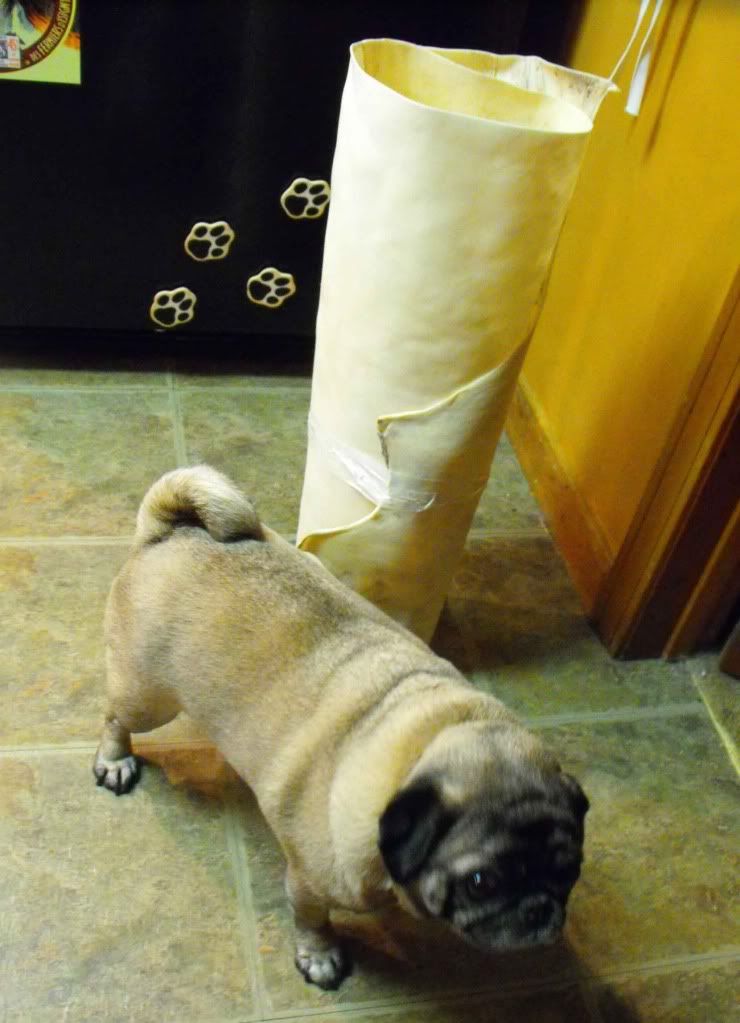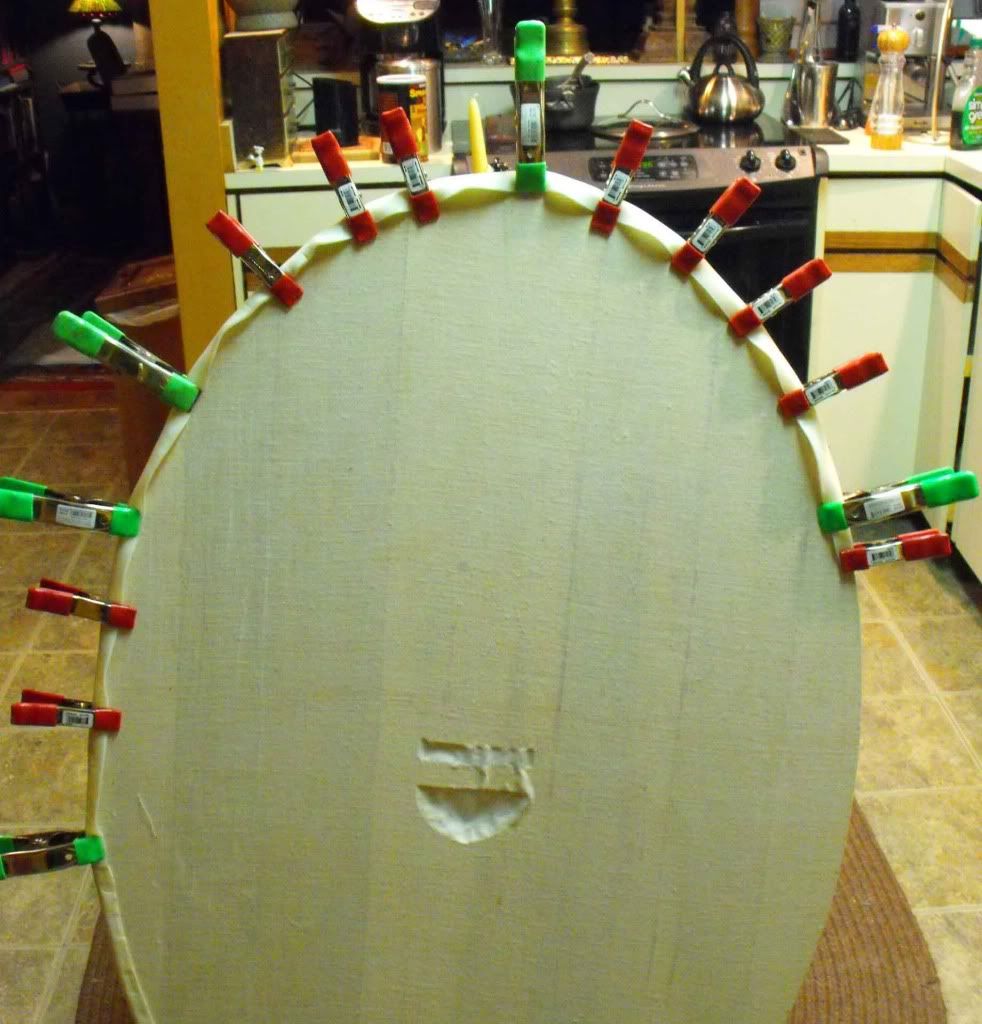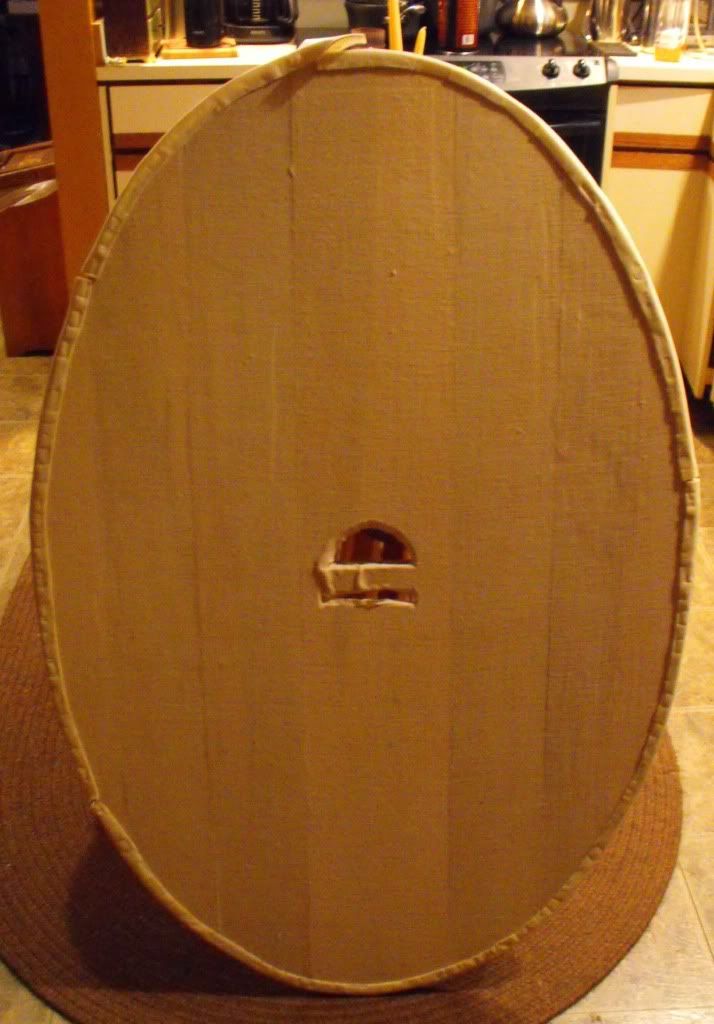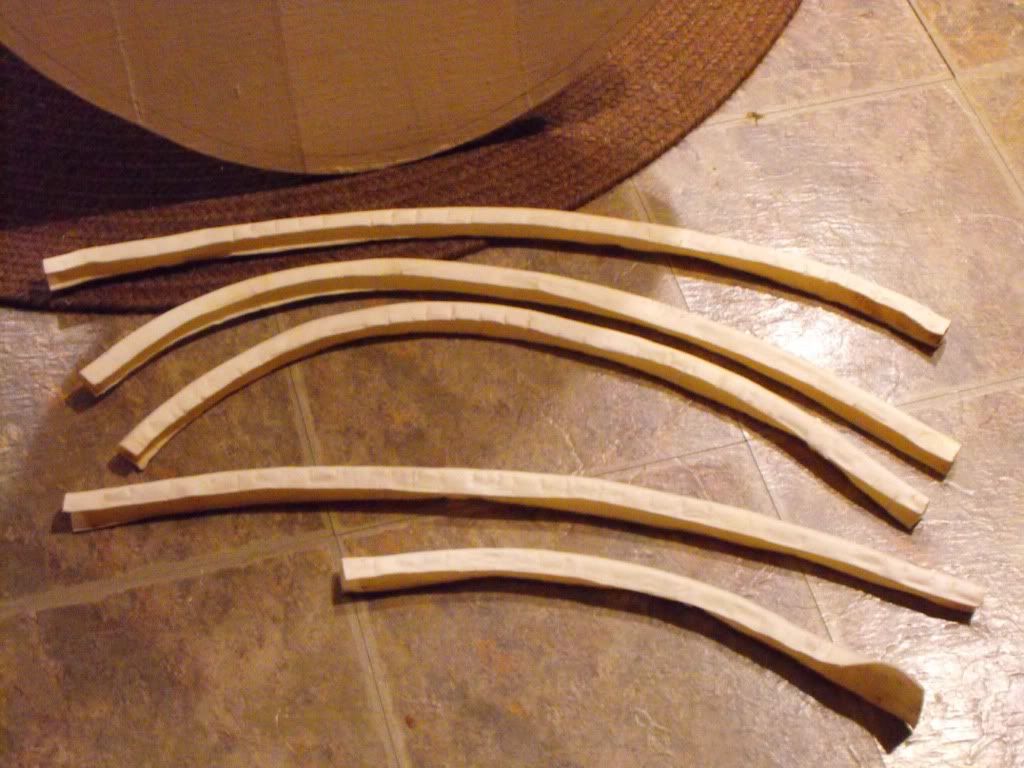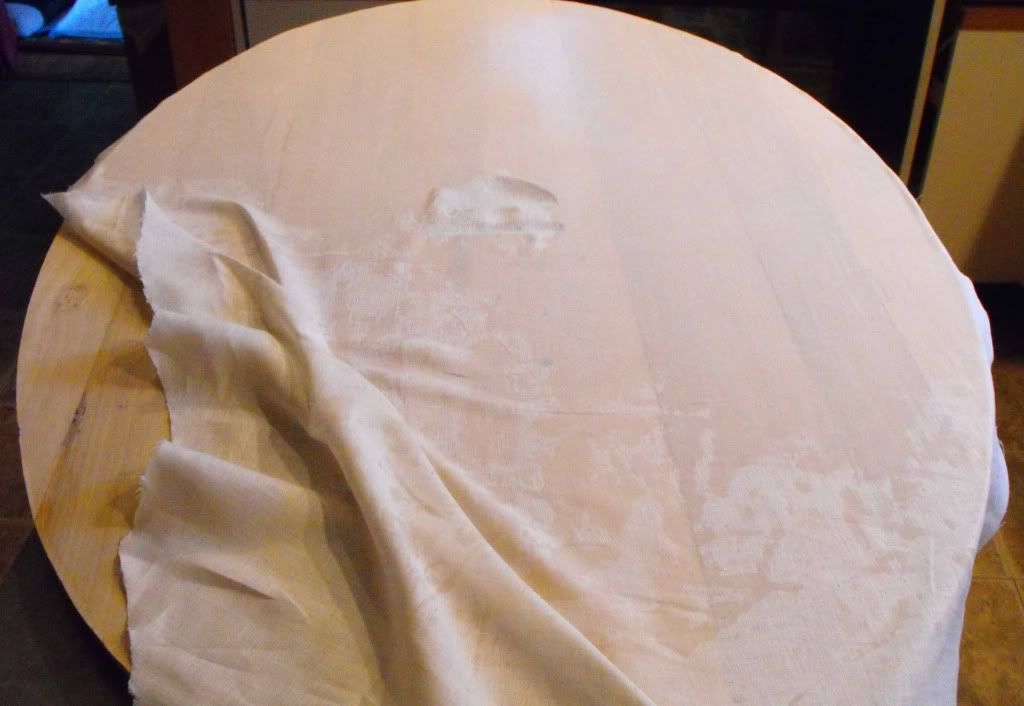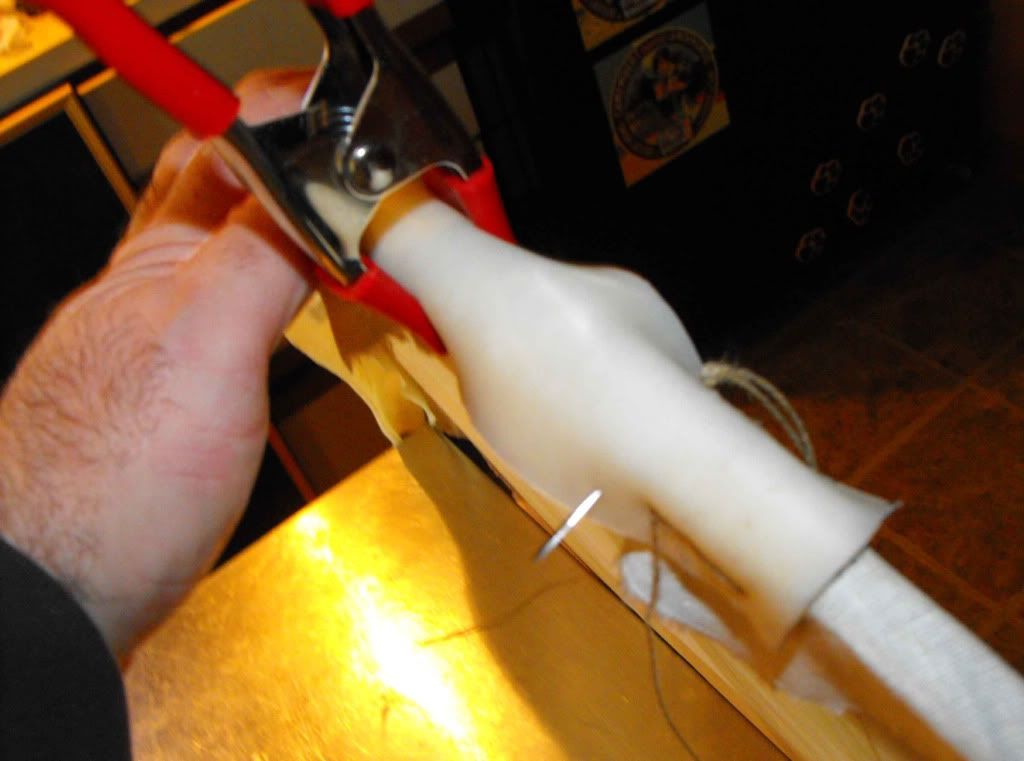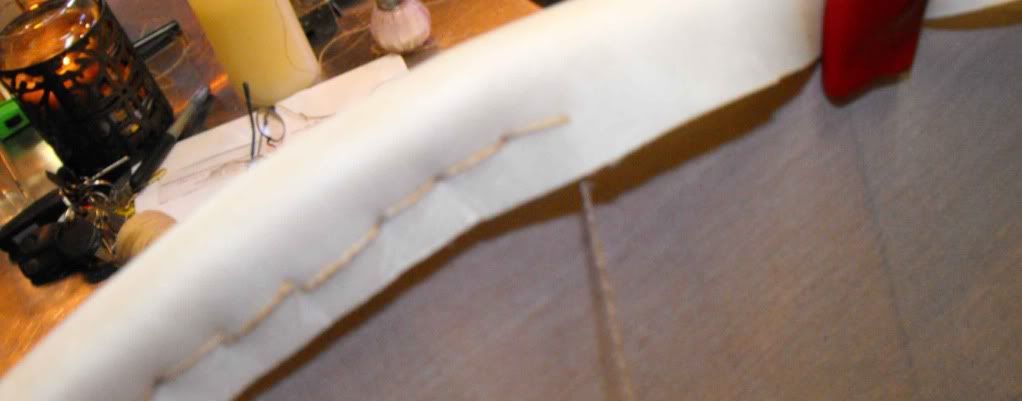stoneagebowyer
New Member
Hi, everyone. A thread about Capt. America's shield got me thinking about a project that I haven't quite finished, and should get back to this summer. One of my hobbies is Roman reenacting / living history. One unit I belong to is Excucatores iuniores Britanniciani, Auxilia Palantina. They were part of the last Roman forces in Britannia, which is the period the film King Arthur (2004). Now, while it wasn't a great film in my opinion, there were things about it I liked. So, this scutum or shield, while not replicating any particular prop from that film, does replicate an actual scutum from Dura Europus. The shield was build using edge joined poplar planks, each plank being a different width, with one central bracing that also was the hand grip, and the shield was edge drilled for presumably rawhide edging, a common method throughout Roman history. Brass edging was used, but was uncommon.
I cheated on this shield and used modern hand and power tools. I do have a set of hand forged Roman through Medieval period tools, and one day will build another scutum using only Roman woodworking methods, but for all intents and purposes, this shield is identical to what a late Roman soldier would have carried and used in battle.
Perhaps this will inspire others who are interested in making the kind of shield you would see in ancient history-based films, including the early medieval period, Viking period, and so on. This one is not quite done, and still needs to have the boss riveted on and then painted. The exact shield pattern for my recreated unit is recorded in an amazing document called the Notitia Digitatum. Late Roman Shield Patterns and the Notitia Dignitatum is the link to the entire document, and Late Roman Shield Patterns - Comes Britanniarum is the link to this unit. You can think of Excucatores iuniores Britanniciani, Auxilia Palantina as a type of frontier auxilary force, and they guarded the coast against mainly Saxon invaders and raiders.
I cheated on this shield and used modern hand and power tools. I do have a set of hand forged Roman through Medieval period tools, and one day will build another scutum using only Roman woodworking methods, but for all intents and purposes, this shield is identical to what a late Roman soldier would have carried and used in battle.
Perhaps this will inspire others who are interested in making the kind of shield you would see in ancient history-based films, including the early medieval period, Viking period, and so on. This one is not quite done, and still needs to have the boss riveted on and then painted. The exact shield pattern for my recreated unit is recorded in an amazing document called the Notitia Digitatum. Late Roman Shield Patterns and the Notitia Dignitatum is the link to the entire document, and Late Roman Shield Patterns - Comes Britanniarum is the link to this unit. You can think of Excucatores iuniores Britanniciani, Auxilia Palantina as a type of frontier auxilary force, and they guarded the coast against mainly Saxon invaders and raiders.
Last edited by a moderator:


